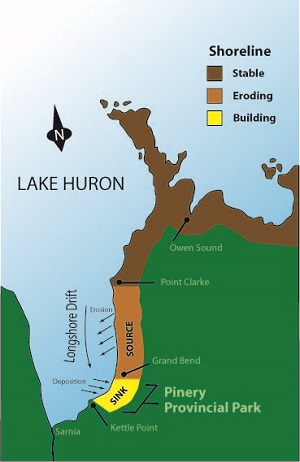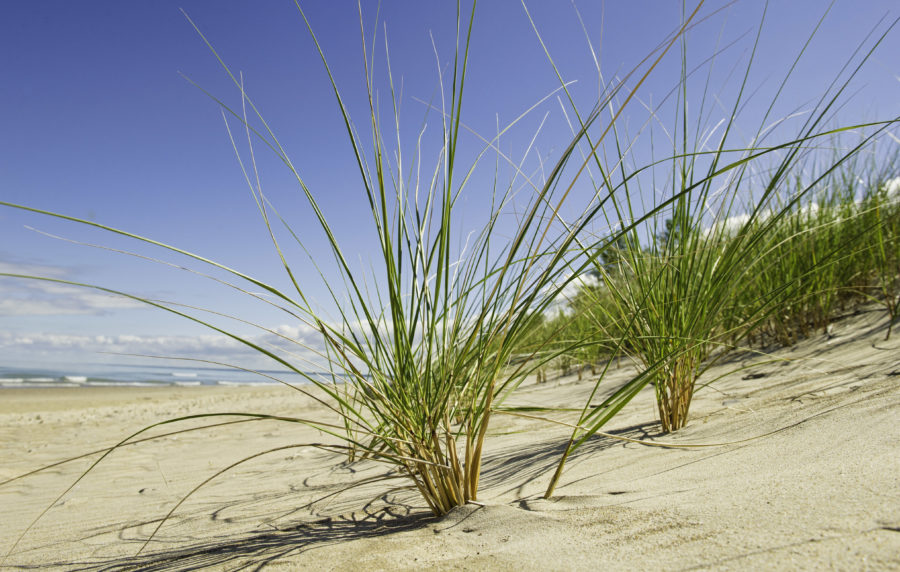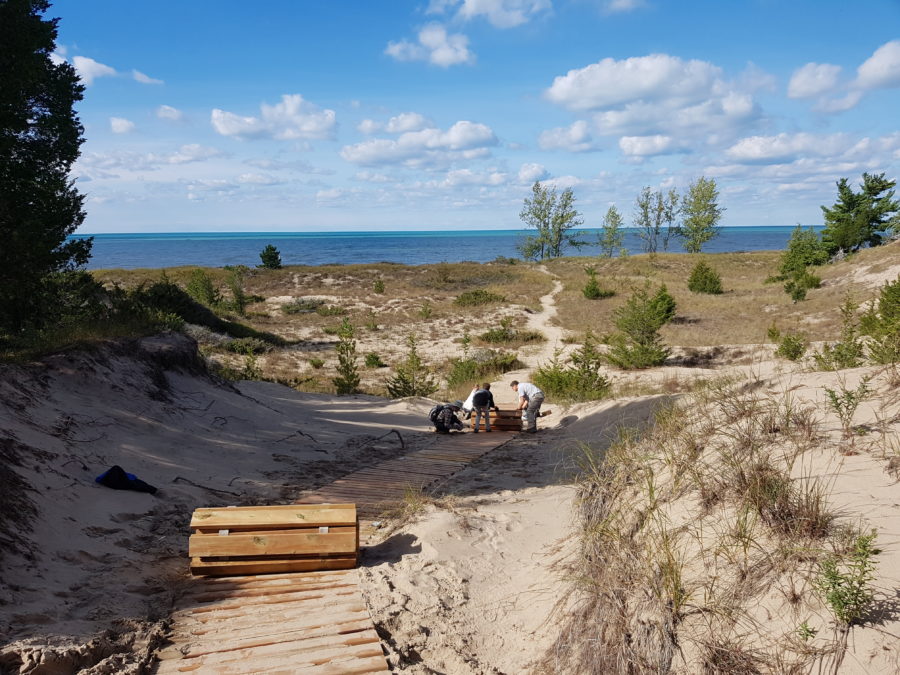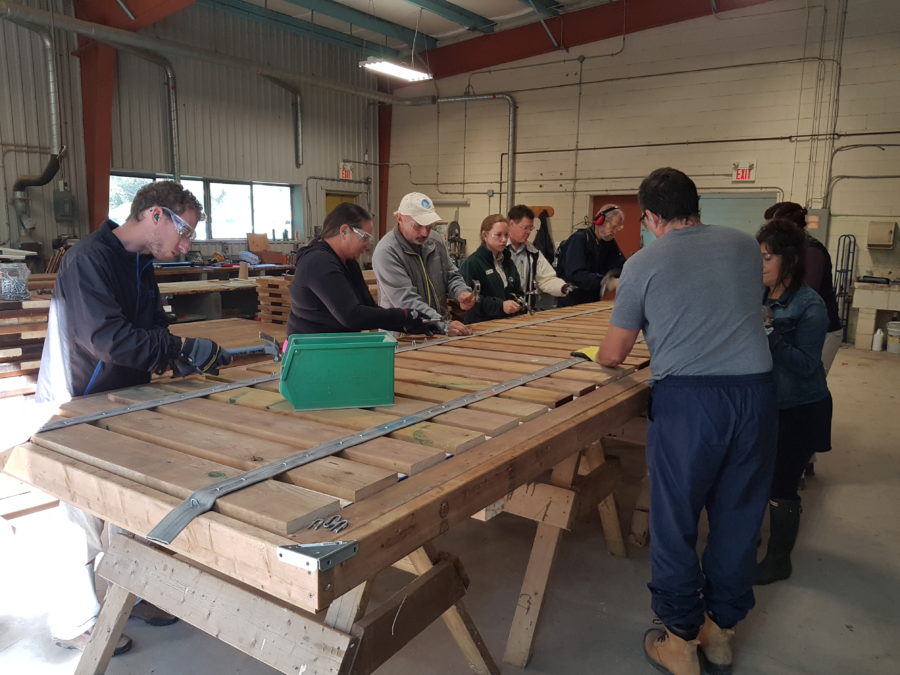Today’s story comes from Alistair MacKenzie, Natural Heritage Education and Resource Management Supervisor at Pinery Provincial Park.
I started out my career saving lives. It was a hard job. Working conditions were awful. I was constantly being asked to bend and twist to what someone else needed me to do. I was dragged through the mud and poked with sticks, even burned with hot embers.
Despite these hardships, I loved aspects of the work, but eventually I just couldn’t keep up, and they pulled me back to base to run me through some tests. Sadly, I failed, and they unceremoniously stripped me of my field approvals and cast me aside.
I thought it was all over, until they boxed me up and shipped me to Pinery Provincial Park.
What am I?
I am a fire hose, and when I couldn’t stand the pressure anymore (water pressure that is), I thought I was headed for the dump.
Thankfully, Pinery called me up for a new assignment: I’d still get to save lives, but this time they’d be rare sand dunes and unique flora and fauna.

I was destined to become the spine of a rolling boardwalk, helping visitors trek to and from the beach in a sustainable way.
About 10 years ago, I was granted the opportunity to travel to the state of Michigan to visit a number of their national, state and municipal Parks.
The first stop on the tour was to Sleeping Bear Dunes National Lakeshore, a site I always wanted to visit because of the similarities between it and Pinery. where I work.
The visit didn’t disappoint, and in no time I was seeing and hearing about innovative solutions to some of the problems we faced too. Problems like managing a popular recreational site with several fragile ecosystems that provides habitat for many species at risk.
By far, the biggest prize of my trip was learning about rolling boardwalks. Before I explain what one is, I should let Alistair tell you a little about sand dunes.
Sand dunes
Pinery is a large freshwater coastal dune complex made up of beach sand with unique vegetation, perfectly adapted to the harsh conditions of this rolling landscape.
In most other coastal dune sites (including Pinery), the habitat is created a littoral cell.

Littoral cells are areas along the coastline of a water body where material, sand and cobbles (in this case), are moved from a source site to a sink site.
Over thousands of years, sand and cobbles eroded from the land north of present day Grand Bend, and moved southward to be deposited on the shoreline between Grand Bend and Kettle Point by Lake Huron’s water currents.
Once waves wash the material ashore, the sand in the mix is picked up by a breeze and bounced up the beach.
Once these sand grains land, the most important plant in Pinery takes over. Marram Grass (Ammophila breviligulata) grabs the loose sand grains within their roots and shoots, and holds them in place allowing dunes to form.
Marram Grass is perfectly designed for dune life. The grass is able to withstand being buried in up to a metre of sand, poor nutrient conditions and extreme heat in the summer and cold in the winter.

Despite being well adapted for the natural conditions of dune life, Marram Grass falls down in one way in Pinery; namely it is very sensitive to trampling. When thousands of people visit the beach at Pinery and other dune sites, their collective footsteps kill the grass and release the sand it had trapped to be blown away.

The Provincial Parks and Conservation Reserves Act establishes that the maintenance of ecological integrity is the first priority in the planning and management of Ontario’s protected areas system.
Additionally, Ontario Parks aims to permanently protect representative ecosystems and biodiversity across the province, while providing opportunities for ecologically sustainable outdoor recreation.

So how do we protect the dunes at Pinery, yet allow for sustainable recreation?
The answer to this question is complex and many tools were used to try to find this balance.
Recently, a group of dedicated park stewards joined me and several other Pinery staff members to build one solution: namely, a rolling boardwalk.
Rolling boardwalks are designed to be put in place during peak summer visitation periods. They can then be rolled away at other times of the year to allow dunes to naturally ebb and flow, deposit and erode, shift to and fro, and act naturally.
![]()
These boardwalks are also very cost effective, as they do not require the supporting structures of more elaborate elevated boardwalks nor do they often have railings.
In our case, we recently field-tested a new method of construction using decommissioned fire hose from the Aviation Forest Fire and Emergency Services (AFFES) division of the Ministry of Natural Resources and Forestry. Countless kilometres of fire hose are put to work each year protecting Ontarians from wildfire. After a while, the hose begins to fail and ultimately does not meet the necessary performance standards.
After trying our hand constructing rolling boardwalks several years ago using expensive wire cables, it struck me that culled fire hose might be just the cost-effective solution we need. Once hose is procured and used for various purposes within the AFFES division, we could put it to use creating rolling boardwalks at Pinery and beyond in Ontario Parks.
The rolling boardwalk recipe
We began by constructing a template to allow us to build numerous sections of boardwalk in an efficient and consistent manner.

Next, we prepared the wooden boards by cutting them to length. Loose boards were laid into the template and two lengths of fire hose stretched down the length of the template ready to be nailed into the underside of the boards using fencing staples.

Then, we gathered a hearty bunch of souls who care about Pinery, and wanted to give something back to the protected areas system in thanks for all the things it gives to us: health and well-being, memories, biodiversity, clean air and water, insects, turtles, flying squirrels…I could go on.
Within two hours of work, these dedicated volunteers put together close to 20 sections of boardwalk for deployment in Pinery.

Once they started working together, like a well-oiled machine, many tasks were completed and the project steamed ahead. We loaded up our tools and headed into the field to deploy the boardwalk. Each section was rolled out and linked to the next. Loose sand was then raked into the gaps between each board.
In areas of active dune formation, namely closest to the shoreline, sections can be rolled up for the winter season, ready to be rolled back out for next summer.
Thank you, volunteers!
There is much more to be done to ensure this measure leads to the sustainable operation of Pinery Provincial Park. We cannot thank our volunteers enough for their time and effort.
We know each of them will walk with pride to the beach along the newly deployed boardwalk, knowing that they helped Ontario Parks in our 125th anniversary year.

Ontarians will be able to enjoy the park for decades to come, and Pinery will still offer the ecological services and match the ecological integrity of today.

Thanks to our dedicated volunteers, the Friends of Pinery Park, and the many staff within the Aviation Forest Fire and Emergency Services division of MNRF who helped to make this rewarding project possible.
As it turns out, the fire hose was perfectly designed for the task.
We are already planning our next boardwalk building session. Perhaps the next time you visit Pinery there will be one rolled out for you just like a red carpet.
To help celebrate Ontario Parks’ 125th anniversary, parks across the province are hosting 13 stewardship programs to help protect biodiversity in provincial parks.


